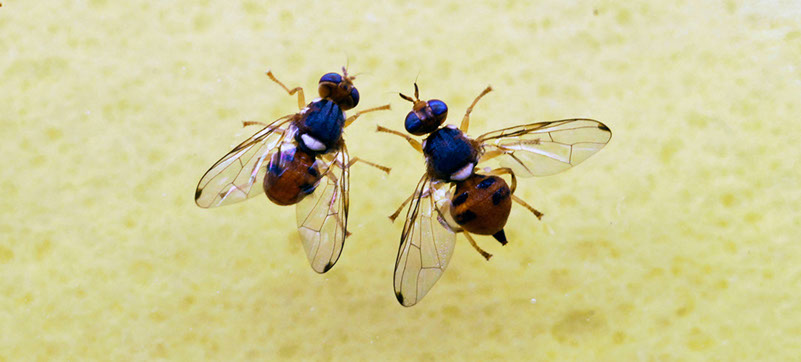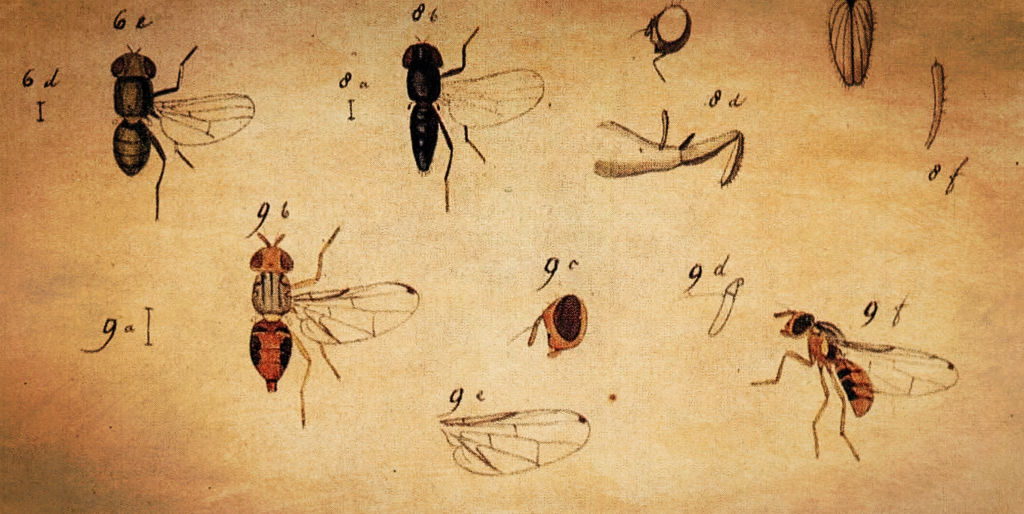THE OLIVE FRUIT FLY
What is the olive fruit fly?
Olive fruit flies are the most dangerous pest threatening olive production in areas they reside. Since first being detected in Los Angeles in 1998, they have spread throughout California destroying countless harvests along the way. It is essential to understand signs of fruit fly infestation, as leaving it unmanaged will not only ruin your olives, but allow the problem to multiply as it attracts more flies to your locale.
The cycle of infestation
Infestations begin as females lay eggs within their primary host: olives. This normally occurs late June through early July when olives are large enough to sustain larvae growth once eggs hatch. Fruit flies are active year-round in mild coastal areas, however, depositing eggs in fruit left on the ground or trees. An individual female might lay 10 to 40 eggs per day, and 200 to 500 in her lifetime.
When larvae hatch they tunnel throughout and feed on their host, damaging it in the process. This will continue around 10 to 20 days until larvae reach adulthood, at which point they emerge from olives to pupate in the soil and fully mature.
What do olive fruit flies look like?
Adult olive fruit flies are about 1/4 inch long with a brown head, thorax and abdomen. The thorax features several white or yellow patches on its top and sides. Wings are clear with black spots at their tips; they are horizontally positioned away from the body. Larvae are pale yellow, legless, pointy-headed maggots.

What does infested fruit look like?
Evidence of females laying eggs normally manifests as small dimples or brown spots on an olive’s skin where it has been punctured. These spots turn yellow as puncture wounds heal. When larvae begin feeding, infected olives appear darker from tunneling and may show signs of rot.
How much damage is too much?
Oil from infected olives has higher acidity and a shorter shelf-life, thus damage should not exceed 10% of total harvest. For table olives, even the slightest hint of infestation may result in an entire harvest’s rejection.
How to manage infestation problem
There are many variables worth considering for infestation management. They are as follows:
- Reduce the availability of habitat in which olive fruit flies thrive. Achieve this by harvesting olives every year, removing as much fruit as possible from trees. Dislodge unpicked olives from branches with a wooden or fiberglass pole, and remove all fallen fruit from the ground. Unused olives should be removed from your property.
- Infected fruit should be placed in tightly sealed bags and removed from your property. This prevents flies from further infecting quality fruit.
- Mass trapping devices such as Olipe and McPhail traps have been shown to cut fly damage by as much as 30% to 100%. These devices attract pests with food lures and trap them once inside. Note that trap effectiveness might vary, however, and should not be the sole method of pest control.
- Food bait sprays such as GF-120 NF Naturalyte Fruit Fly Bait also exist. This organically accepted product contains the insecticide, spinosad, which is an effective agent for pest control.
- Lastly, many growers are turning to kaolin clay. When mixed with water, it is sprayed on olive trees covering them with a particle film. This film dries to a white powder that repels olive fruit flies
More Information
For further information, visit these articles put together by the University of California, Davis:
